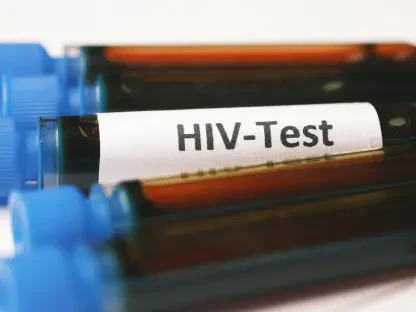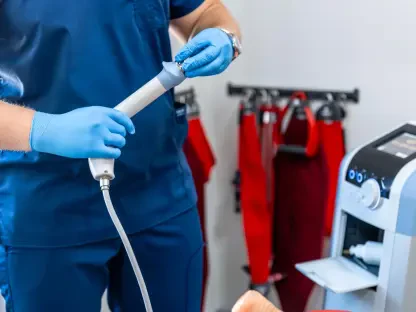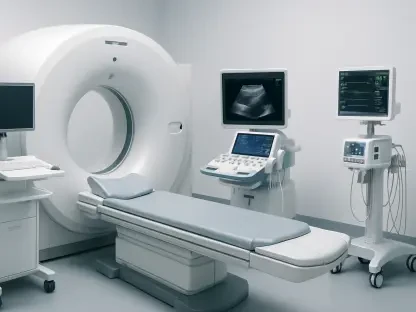In Kenya, the journey from pediatric to adult HIV care marks a pivotal yet daunting phase for countless adolescents, who often grapple with stigma, limited healthcare access, and insufficient emotional support during this critical transition. These challenges frequently result in disengagement from essential treatment, posing severe risks to their health and well-being. Amid such hurdles, mobile technology emerges as a potential lifeline, offering innovative ways to bridge gaps in traditional healthcare systems. A notable initiative, the Adolescent Transition Package (ATP), delivered through mobile devices, aims to provide personalized support to these young individuals, ensuring they remain connected to care. This article delves into the transformative possibilities of mobile tech in revolutionizing HIV care for Kenyan youth, particularly in light of disruptions like the COVID-19 pandemic, which exposed and amplified existing inequities. By exploring the challenges, opportunities, and necessary strategies, the discussion highlights whether this digital approach can truly reshape health outcomes for a vulnerable population.
Navigating the Rocky Road of HIV Care Transition
The shift from pediatric to adult HIV care in Kenya presents a formidable challenge for adolescents, often leading to a dangerous disconnection from treatment. Many young people encounter social stigma that discourages them from seeking help, compounded by logistical barriers such as long distances to healthcare facilities. Without tailored interventions, the risk of non-adherence to antiretroviral therapy (ART) skyrockets, potentially resulting in worsening health conditions and disease progression. This period of transition is not just a change in medical oversight but a profound shift in personal responsibility, where the lack of adequate support can have lasting consequences on their quality of life and survival.
Beyond the practical obstacles, emotional and psychological barriers weigh heavily on Kenyan youth living with HIV. The fear of judgment or rejection often isolates them, making it difficult to openly address their health needs. Feelings of shame or anxiety about their status can deter clinic visits or discussions with healthcare providers. The ATP, delivered via mobile platforms, offers a discreet alternative by providing a private channel for support and information, allowing adolescents to engage with care on their terms. This digital intervention seeks to alleviate the sense of alienation, fostering a connection that could be vital during such a vulnerable stage.
Harnessing Mobile Technology as a Game-Changer
Mobile technology stands as a beacon of hope in transforming HIV care delivery across Kenya, particularly in areas where traditional healthcare access is limited. With mobile phone usage remarkably high, even in rural communities, the ATP capitalizes on this widespread accessibility to deliver critical resources like medication reminders, counseling, and educational content directly to adolescents. This approach ensures that young individuals can stay engaged with their treatment plans, even when external crises, such as the COVID-19 pandemic, disrupt in-person medical services. By leveraging a tool already embedded in daily life, the initiative aims to create a seamless integration of health management into the routines of Kenyan youth.
However, the promise of mobile tech comes with significant caveats that must be addressed to ensure its effectiveness. Disparities in access to devices and reliable data services persist, particularly between urban and rural settings, creating an uneven playing field for intervention reach. While urban adolescents might easily engage with digital platforms, their rural counterparts often struggle with connectivity issues or lack of personal devices. To counter this, innovative solutions like partnerships with mobile network providers for subsidized data plans or community-shared access points could be pivotal. Only by tackling these inequities can mobile interventions truly serve as a universal lifeline for all Kenyan youth living with HIV.
Fostering Trust and User Engagement in Digital Platforms
For mobile interventions like the ATP to make a meaningful impact, they must resonate deeply with Kenyan adolescents, meeting their unique needs and preferences. Feedback from young users indicates a strong appreciation for features that are interactive and customizable, such as personalized notifications for medication or tools that encourage self-reflection on their health journey. These elements not only enhance usability but also empower youth to take an active role in managing their care. However, the success of such platforms hinges on their ability to adapt to user input, ensuring the technology feels relevant and supportive rather than intrusive or generic.
A critical barrier to engagement lies in the concerns surrounding privacy and the persistent stigma associated with HIV status among Kenyan youth. If adolescents fear that their personal information could be exposed or misused, they are less likely to embrace digital tools, no matter how well-designed. Building trust requires robust data security measures and a platform design that prioritizes confidentiality at every step. By creating a safe digital environment and actively involving youth in shaping the ATP’s features, developers can foster a sense of ownership and reliability. Such efforts are essential to ensure consistent use and to transform the platform into a trusted companion during the challenging transition to adult care.
Bridging Gaps to Ensure Equitable Access
The potential of mobile technology to revolutionize HIV care for Kenyan youth is undeniable, yet its impact remains limited by stark socioeconomic and geographic disparities. Urban adolescents often have better access to personal devices and stable internet connections, positioning them to benefit more readily from initiatives like the ATP. In contrast, rural youth frequently face obstacles such as shared or no access to phones and unreliable network coverage, which can exclude them from these vital resources. Addressing this digital divide is crucial to ensuring that mobile health interventions do not inadvertently widen existing inequalities but instead serve as a tool for inclusion across diverse communities.
To extend the reach of programs like the ATP, targeted strategies and local partnerships must be prioritized to support underserved populations. Collaborations with community organizations and health workers can facilitate awareness campaigns, ensuring that even those in remote areas learn about and access the benefits of mobile interventions. Additionally, initiatives to provide affordable devices or communal access points could help overcome hardware barriers. By combining technology with grassroots efforts, the goal of equitable healthcare delivery becomes more attainable, allowing every Kenyan adolescent living with HIV an equal opportunity to thrive during their transition to adult care.
Shaping a Future of Inclusive HIV Care
Reflecting on the exploration of mobile technology’s role in HIV care, it’s evident that initiatives like the ATP mark a significant step forward in addressing the needs of Kenyan youth during their transition to adult care. The approach harnesses the ubiquity of mobile phones to deliver essential support, tackling barriers that once seemed insurmountable. Challenges such as stigma, access disparities, and privacy concerns are met with innovative strategies, from user-centered design to partnerships aimed at bridging the digital divide. Looking ahead, the focus must shift to scaling these solutions through sustained collaboration between health policymakers, tech developers, and community stakeholders. Investing in robust infrastructure for connectivity and ensuring continuous feedback loops with adolescents will be key to refining these interventions. By prioritizing inclusivity and adaptability, the groundwork laid by such programs can inspire broader global health models, paving the way for a future where no young person navigating HIV care is left behind.









